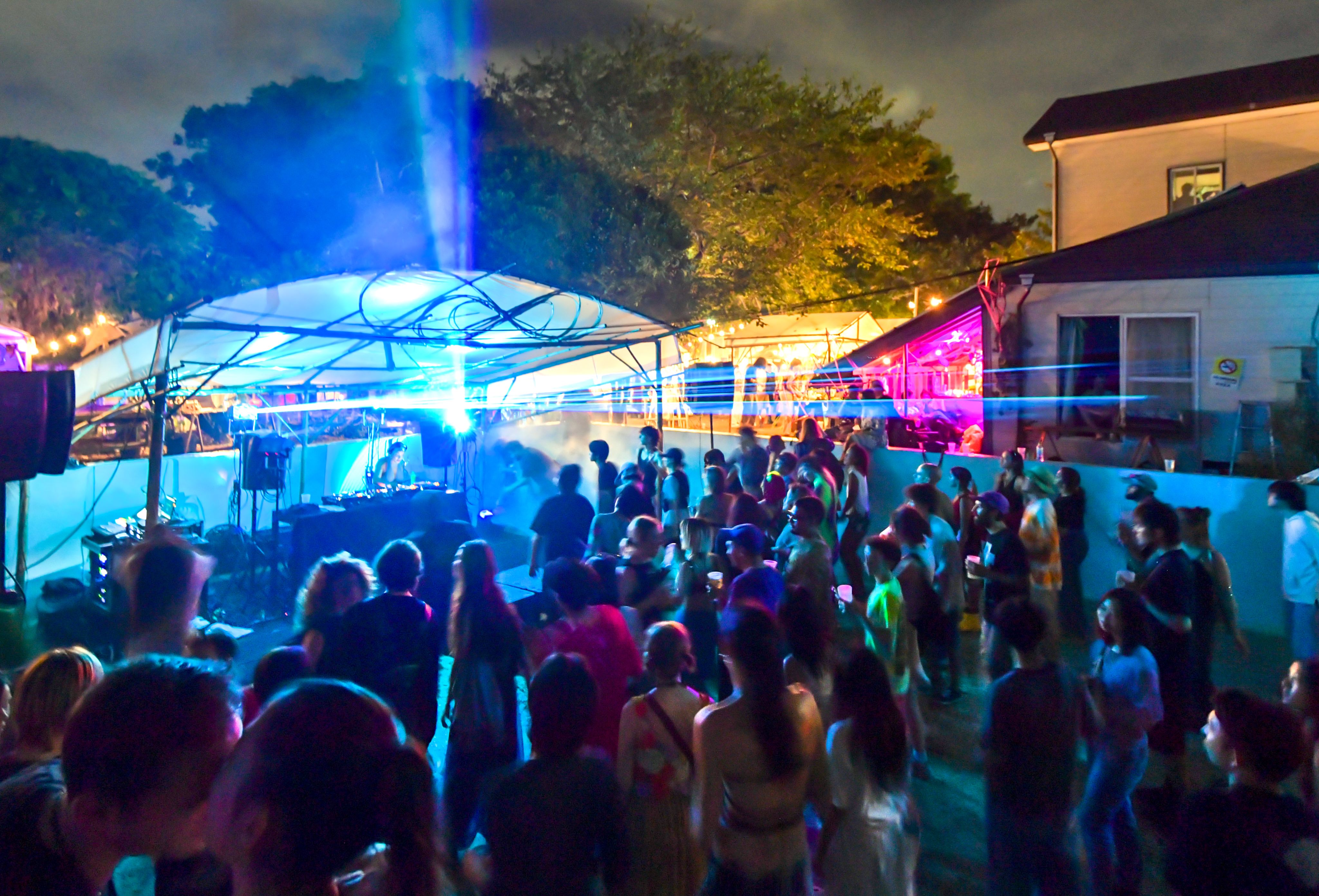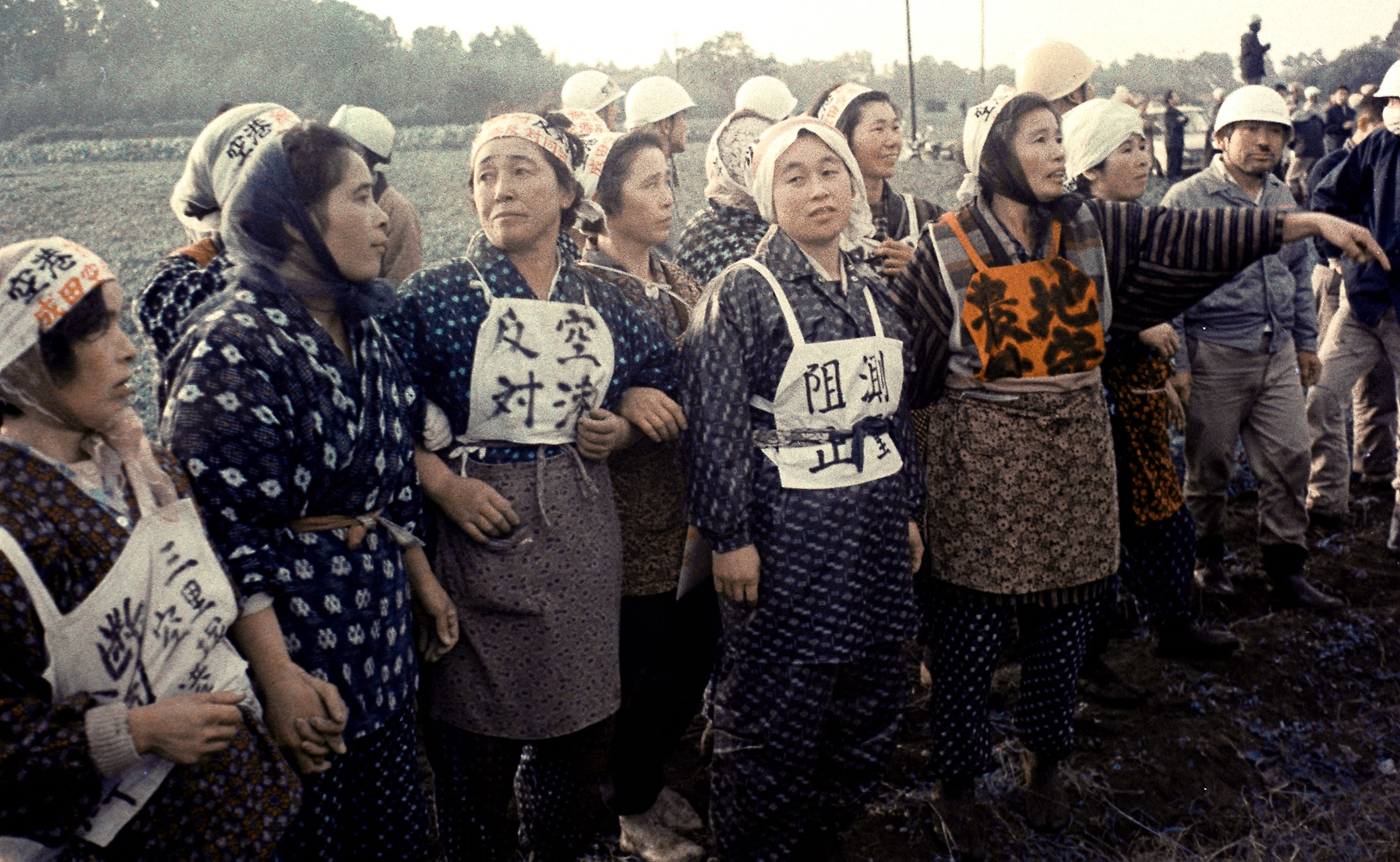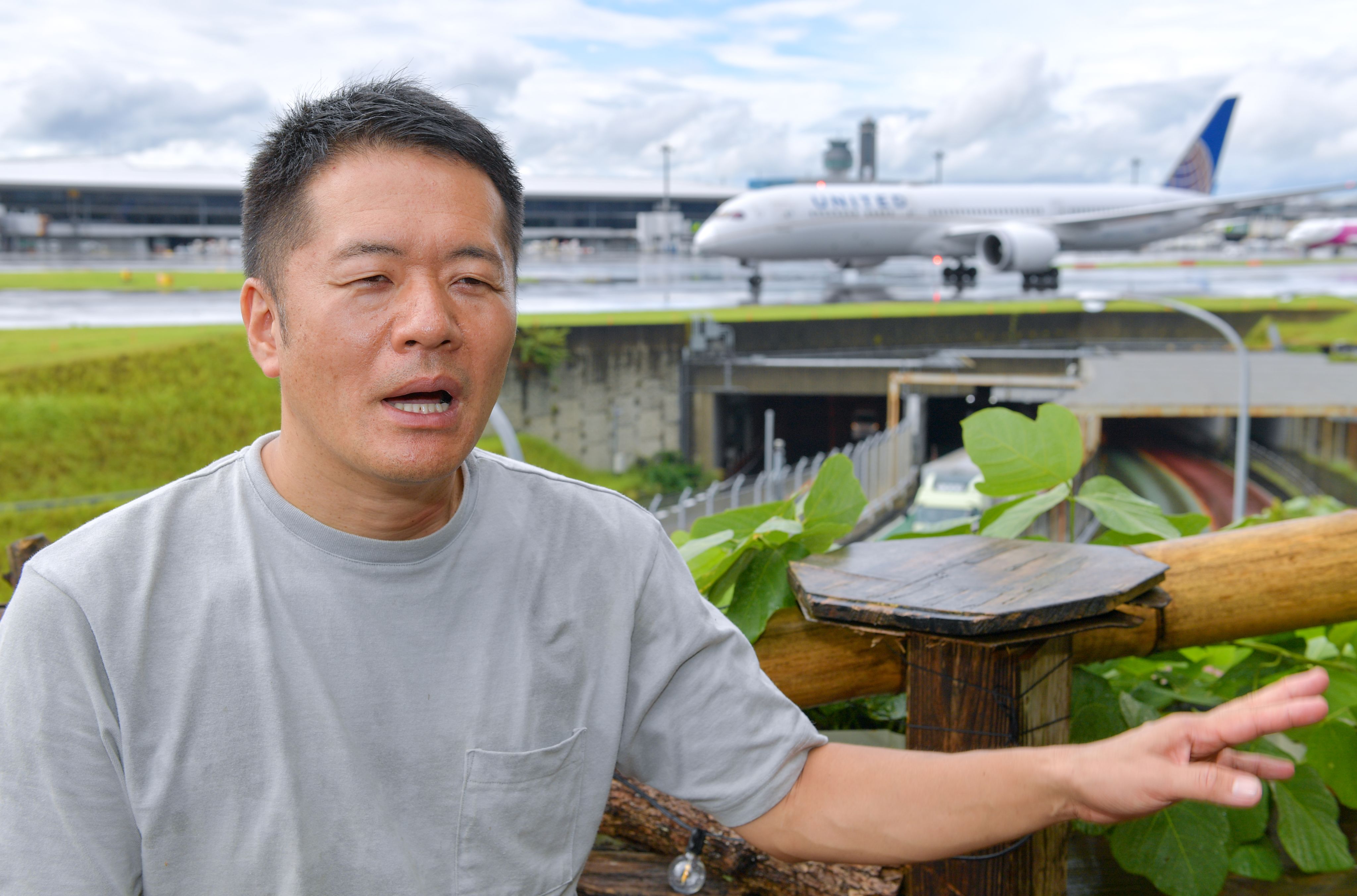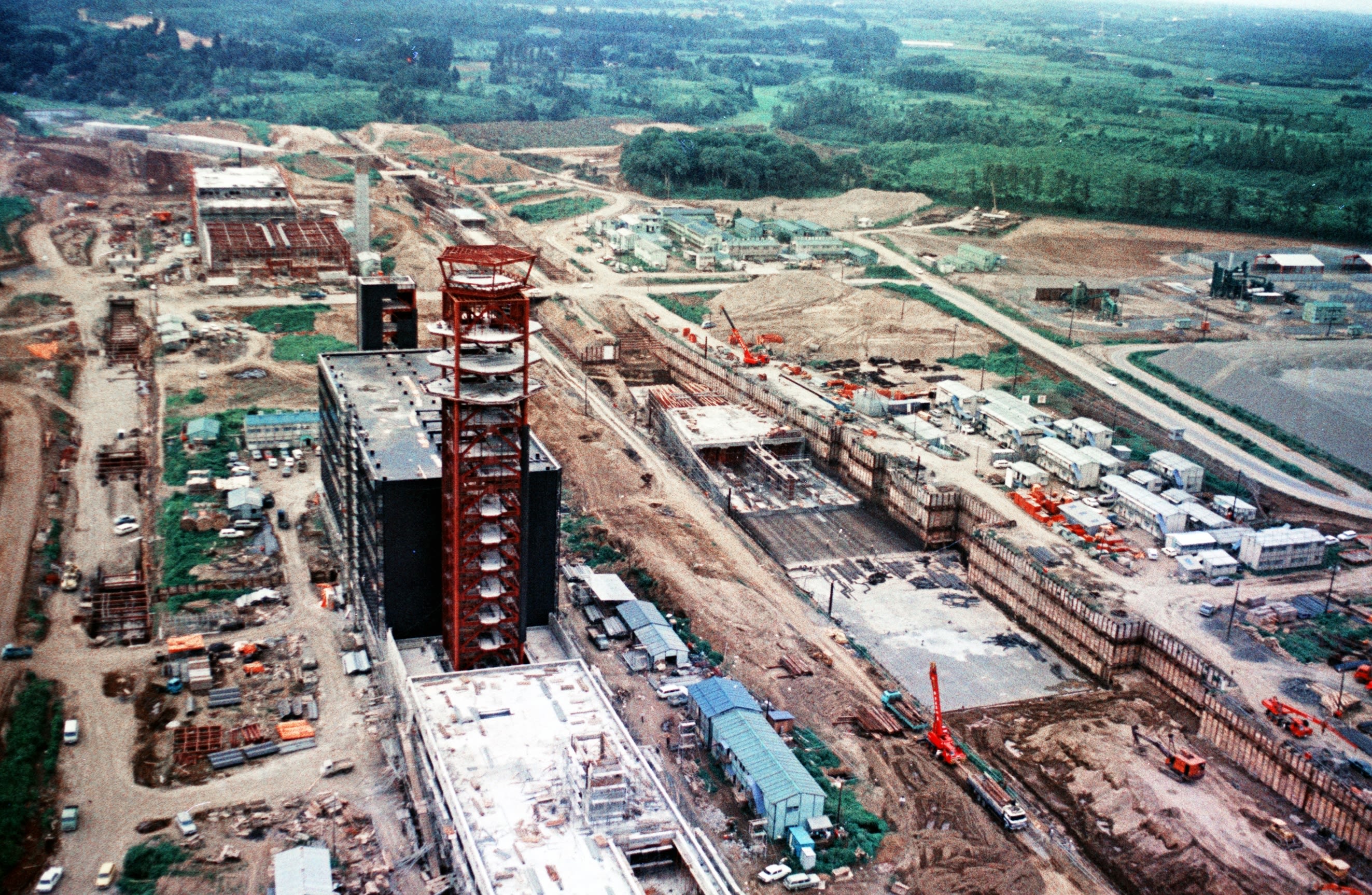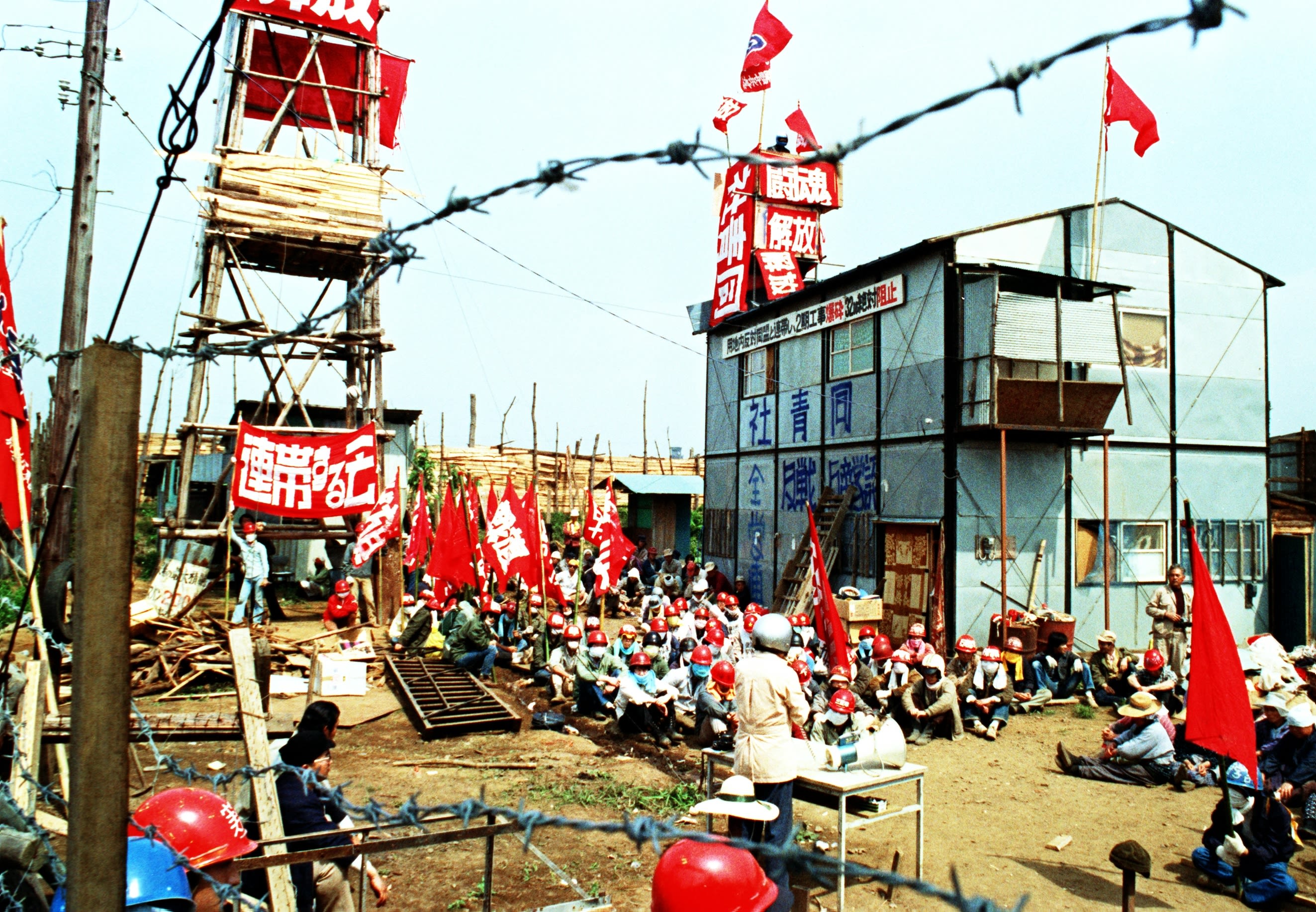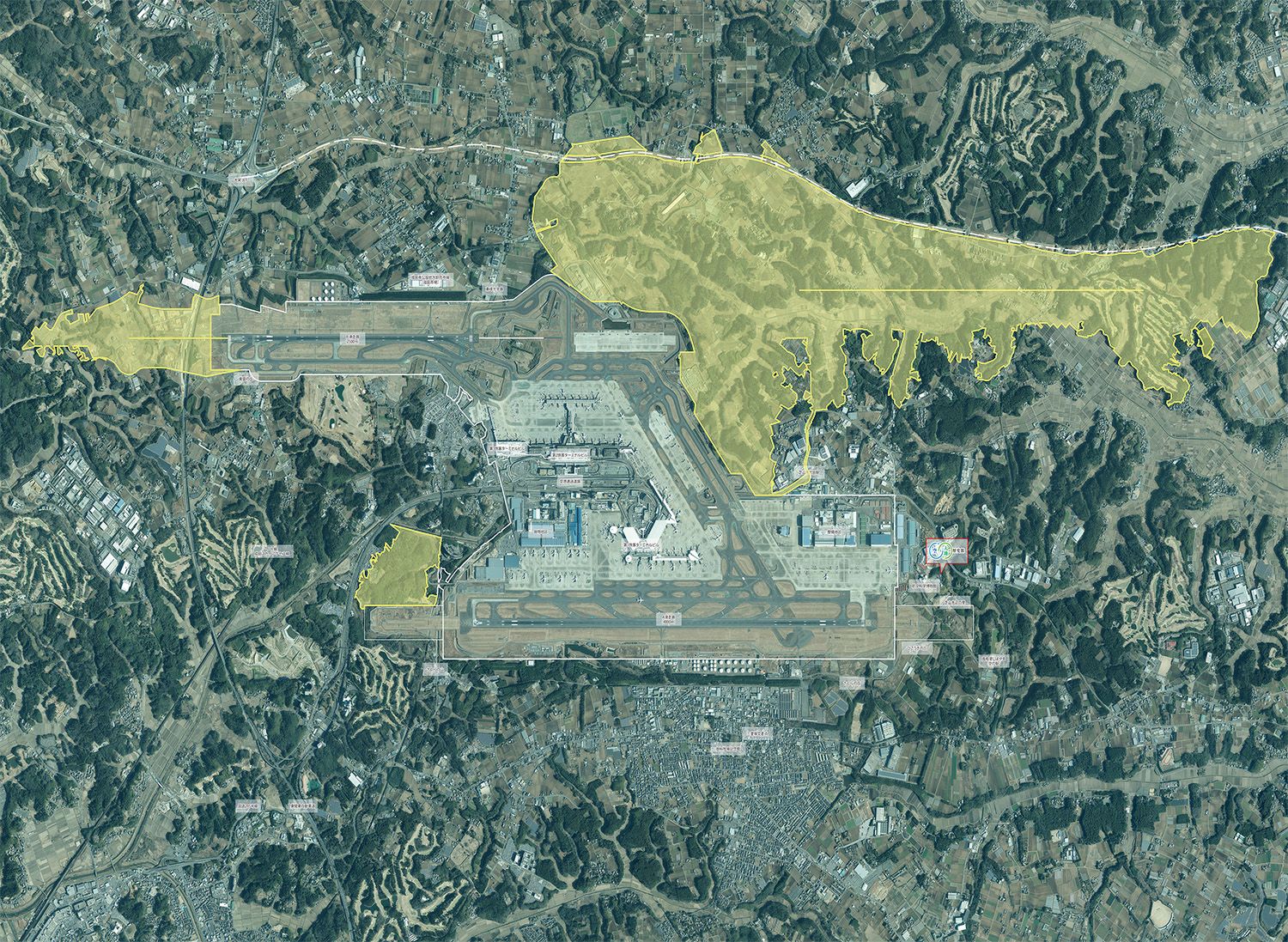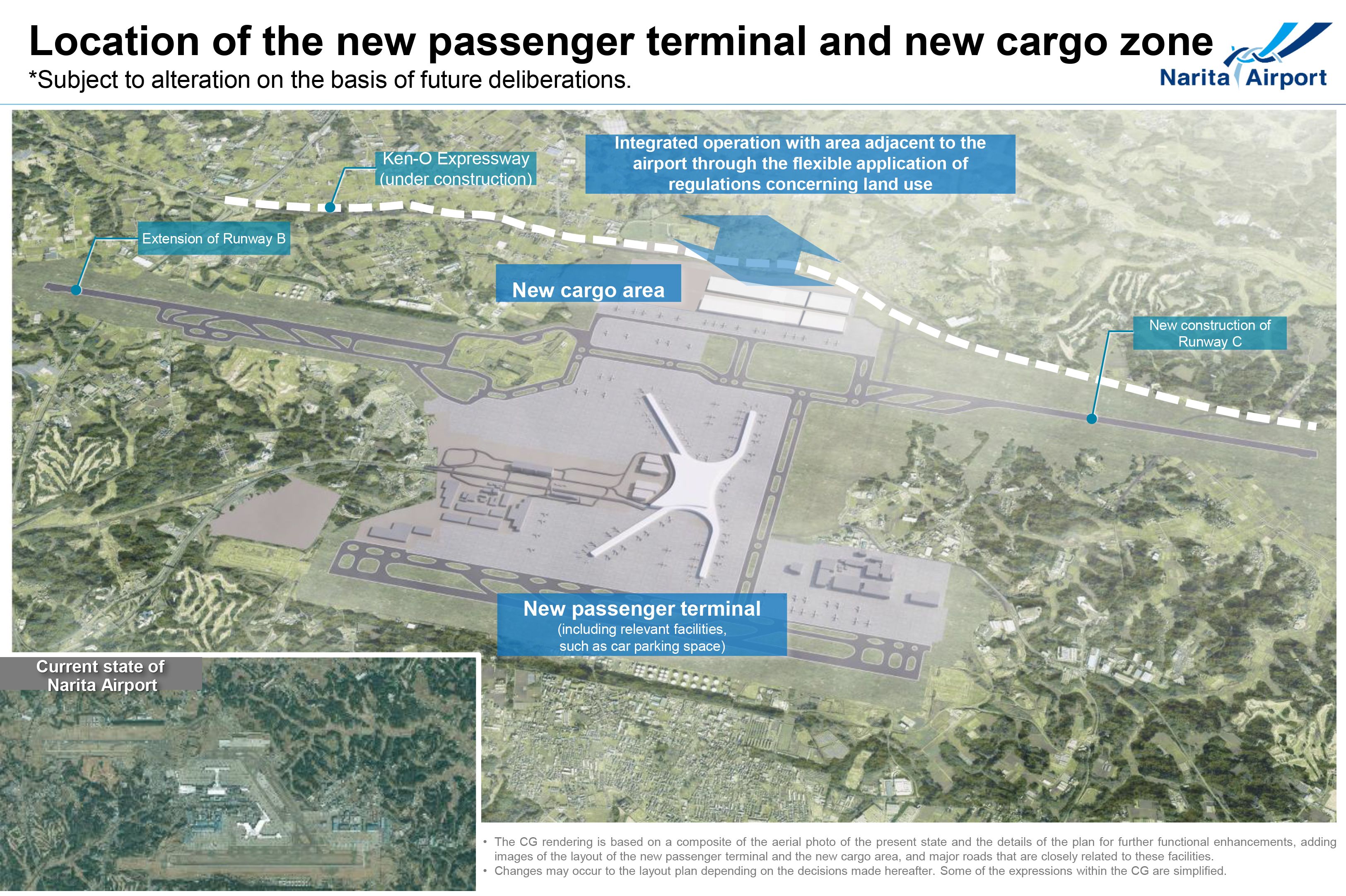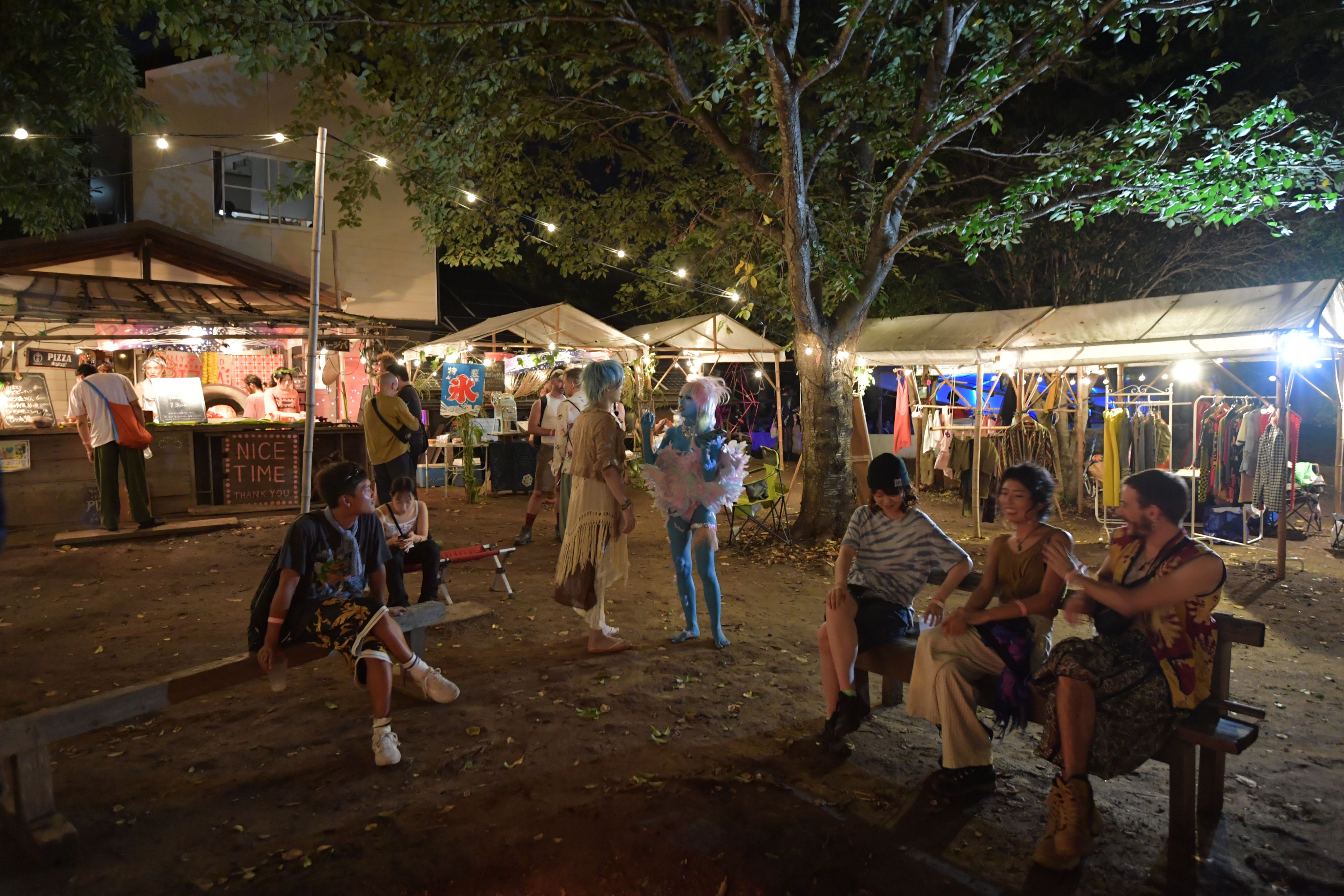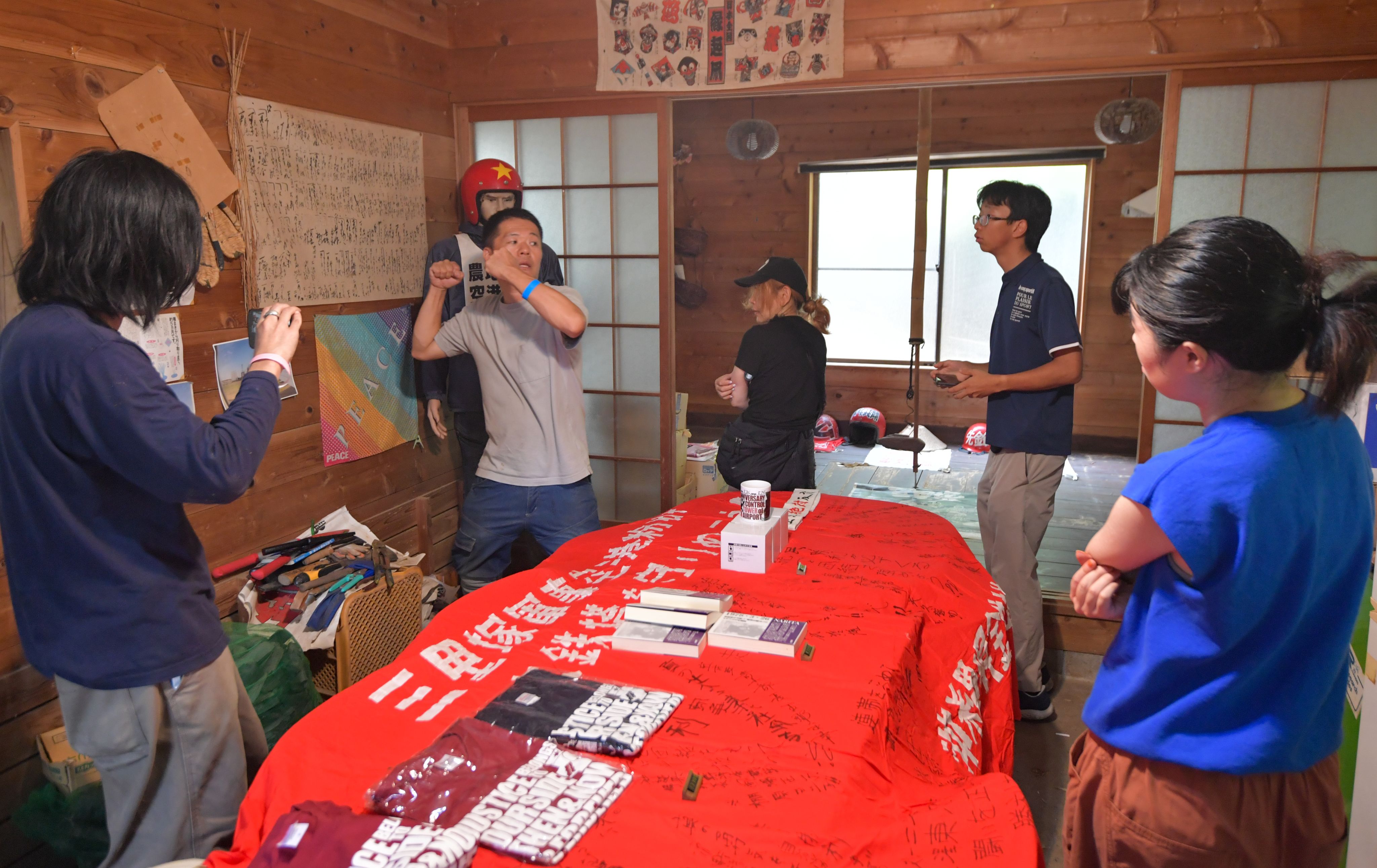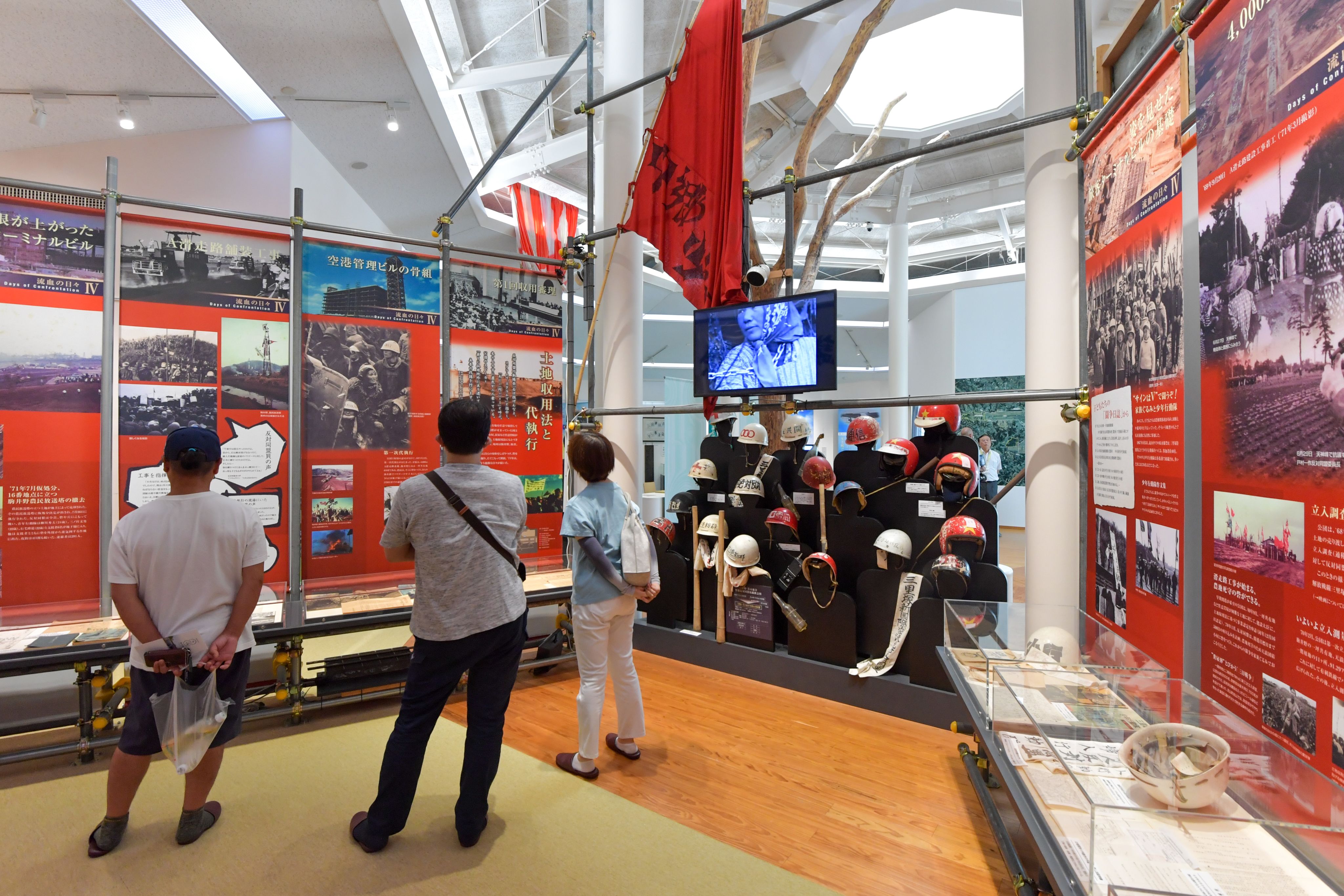Narita's holdouts fight for a future beneath the flight path
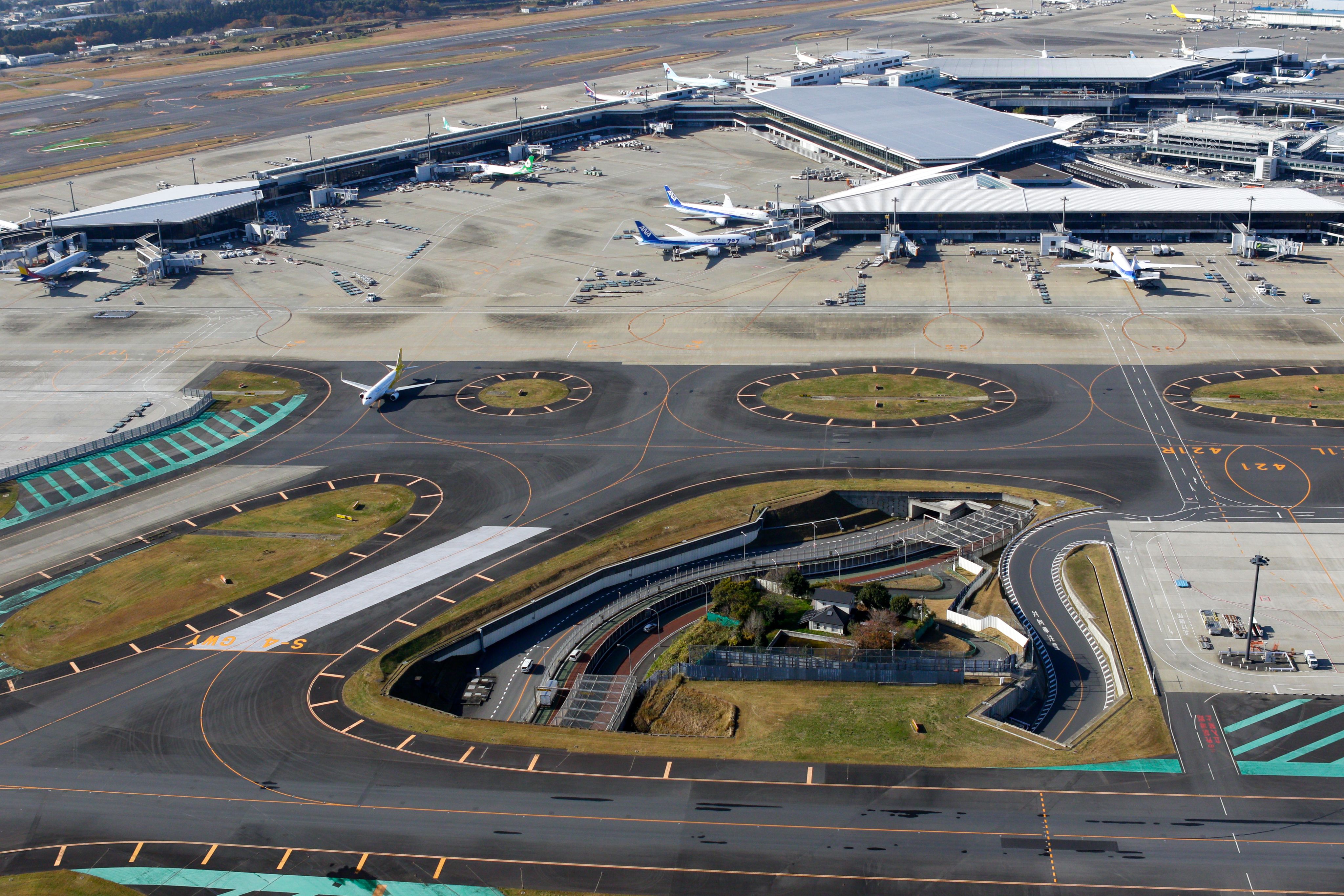
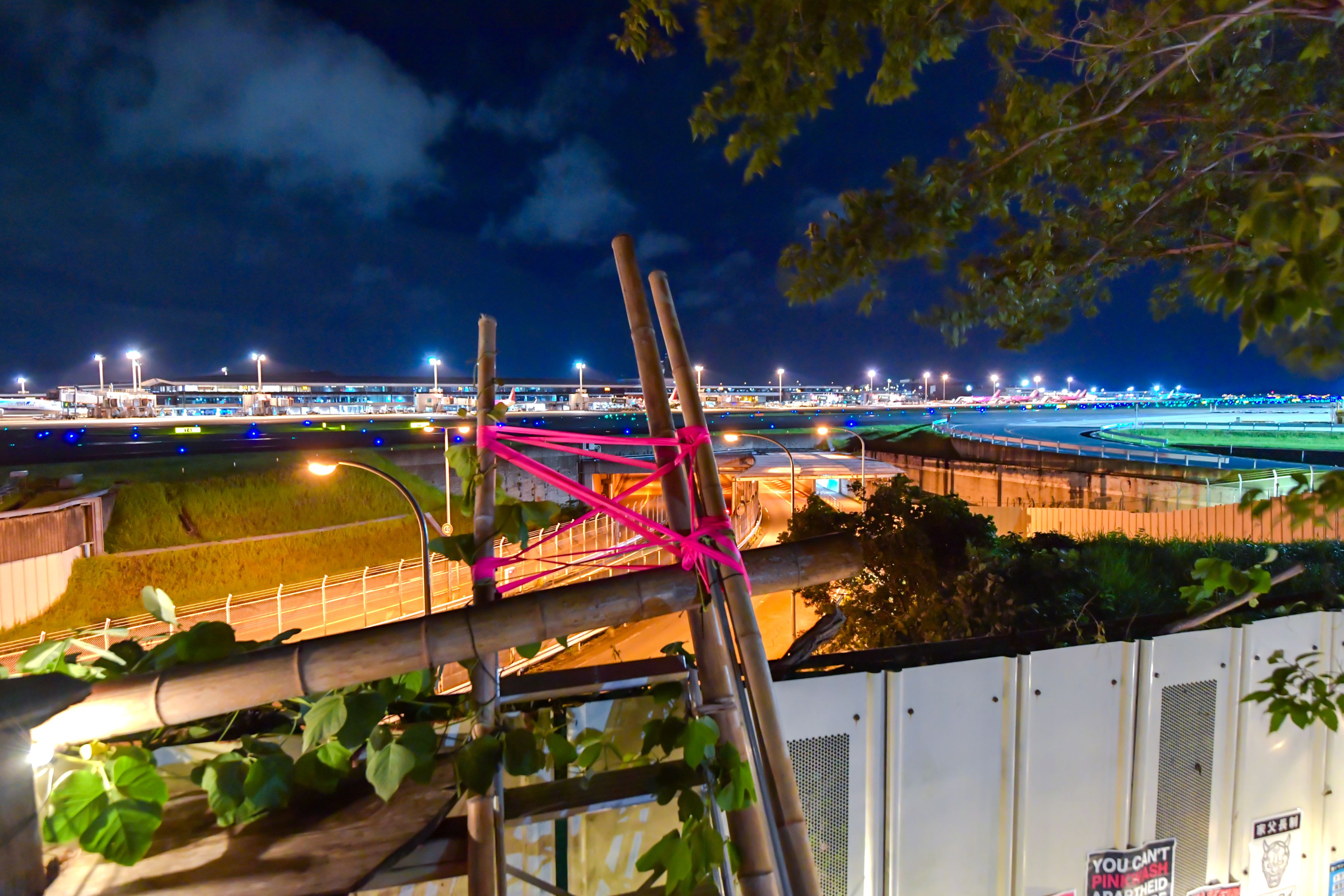
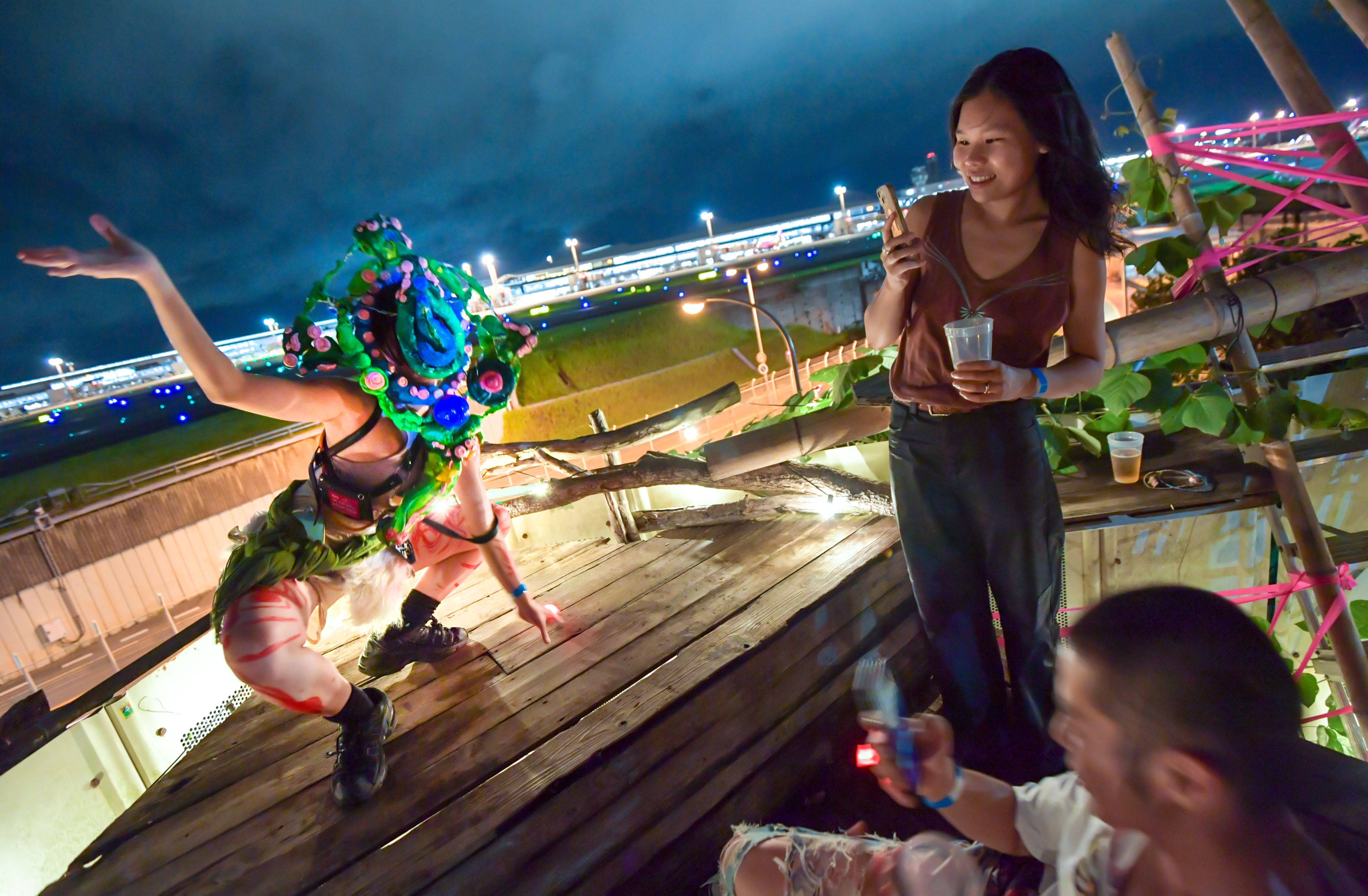

Resembling shark fins poking above the waterline, the tails of taxiing airplanes are just visible over the tall white fence that separates Kinone Pension from the runways of Narita airport.
Like circling marine predators, the aircraft represent the threat the surrounding airport poses to the property that rises like a green island oasis from the asphalt.
The residence, about an hour's drive from central Tokyo, stands as a stubborn reminder of Narita's turbulent history and a testament to the power of community, hosting gatherings throughout its existence ranging from activist meetings to wild all-night raves.
The building -- with a backyard, an empty pool and trees -- creates a relatively normal setting for its occupants, despite the roar of jet engines.
Here, the decades-old fight against the airport's construction, known as the Sanrizuka Struggle, lives on. But its caretakers are now struggling with passing on the property's story to new generations, as well as expansion plans that may threaten its existence.
Residents are pictured resisting land survey activities taking place for the planned construction of Narita airport in Chiba Prefecture, near Tokyo, in October 1967. (Kyodo)
Residents are pictured resisting land survey activities taking place for the planned construction of Narita airport in Chiba Prefecture, near Tokyo, in October 1967. (Kyodo)
"I was born a year after the conflict's most intense period," said Kinone Pension caretaker Takenori Omori, referring to 1978, when protesters broke into a control tower in an effort to stop the airport's imminent opening.
"My parents would take me to protests, meetings, or to help farmers with their work," Omori, 46, recalled.
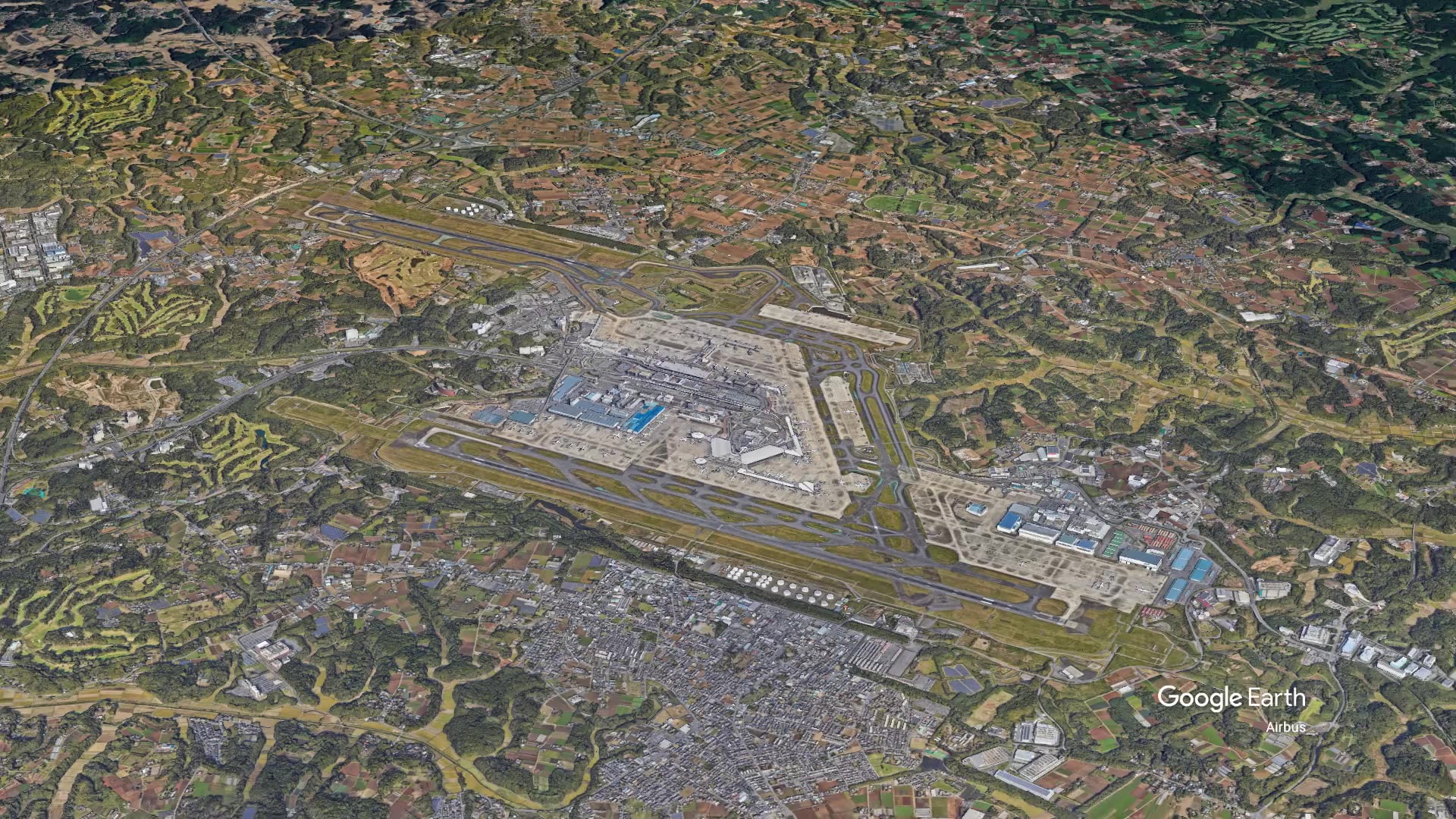
In 1966, the Cabinet of then-Prime Minister Eisaku Sato designated the area of the agricultural municipality of Sanrizuka in Chiba Prefecture as the location for a second airport to serve Tokyo.
Haneda airport, then Japan's primary international hub, was at near full capacity amid the country's postwar boom.
Narita airport is pictured under construction in July, 1971. (Kyodo)
Narita airport is pictured under construction in July, 1971. (Kyodo)
But the government failed to consult the Sanrizuka community beforehand, and the abrupt move to displace them from their lands and livelihoods ignited an extraordinary conflict. The struggle led to several deaths, repeatedly delayed the airport's opening, and sparked land disputes that continue to this day.

Omori's parents were among thousands who descended on Sanrizuka from across the country to mobilize against state forces, fighting alongside local farmers at risk of eviction, radicalized students amid the era's university protests, and various left-wing groups.
Farmers, students and other anti-airport activists are pictured holding a meeting at a fort-like “solidarity hut” at Kinone in May 1978. (Kyodo)
Farmers, students and other anti-airport activists are pictured holding a meeting at a fort-like “solidarity hut” at Kinone in May 1978. (Kyodo)
Kinone, within Sanrizuka, was the site of a so-called "solidarity hut," a fort-like structure where protesters gathered and lived.
The hut was replaced with a Western-style boardinghouse to avoid being targeted by lawsuits over airport safety and security, while numerous activists took shared ownership of the property to further complicate the possibility of its purchase by authorities.
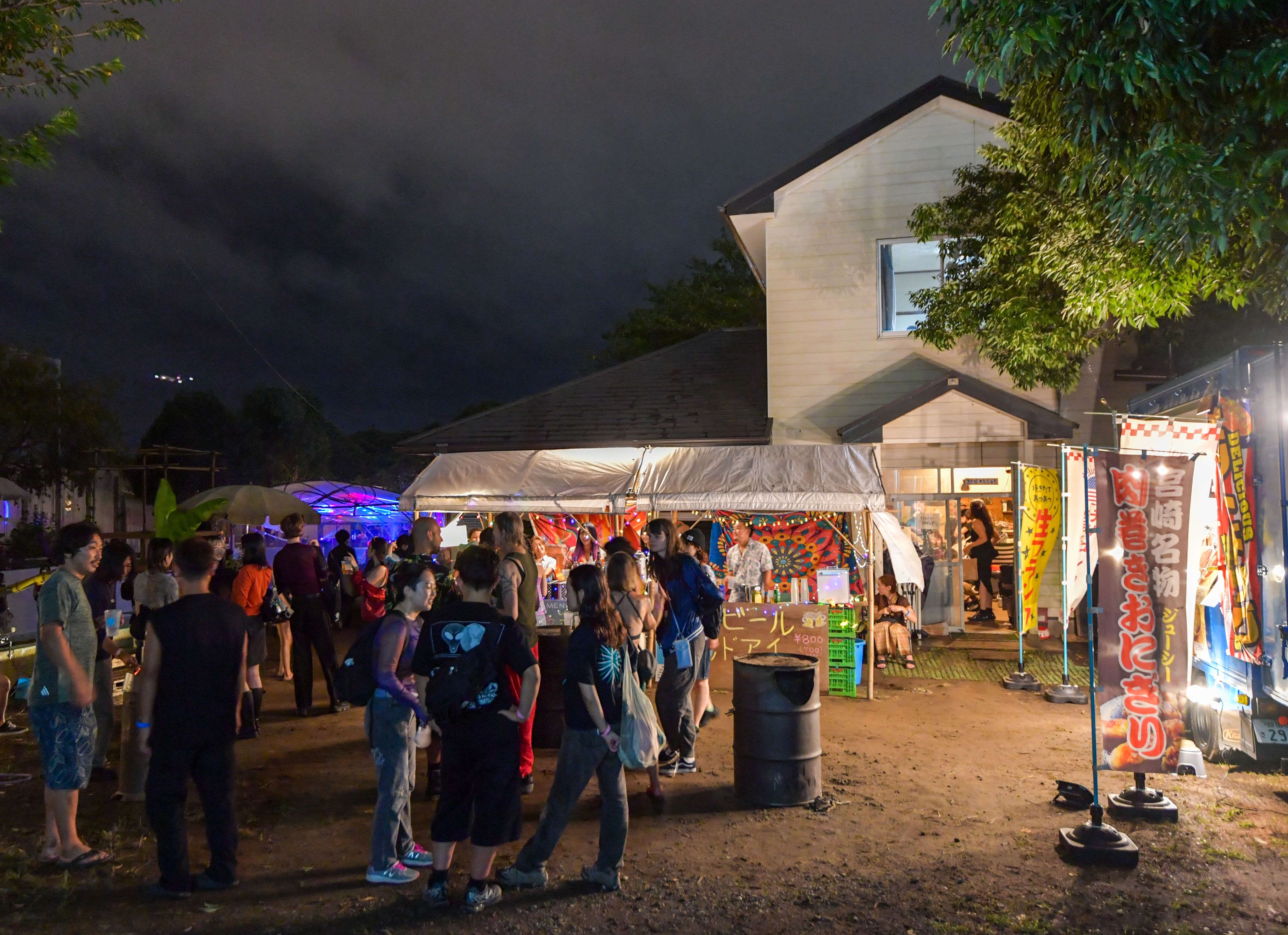
The pension is one of several remaining private properties, including farms, that dot the airport.
But the airport operator, Narita International Airport Corp., has pressed ahead with plans that could see the facility roughly double in size to 2,297 hectares by 2029, despite admitting only 83 percent of the land has been secured.
Supplied photo shows areas marked for the planned expansion of Narita airport outlined in yellow. (Courtesy of Narita Airport and Community Historical Museum)
Supplied photo shows areas marked for the planned expansion of Narita airport outlined in yellow. (Courtesy of Narita Airport and Community Historical Museum)
In May, the airport began breaking ground on the lengthening of Runway B by 1,000 meters to 3,500 m, as well as the construction of a new Runway C, also 3,500 m.
(Courtesy of Narita International Airport Corp.)
(Courtesy of Narita International Airport Corp.)
In publicized plans for the consolidation of Narita's three terminals into one, "Kinone Pension is erased from the map," Omori notes."
"I wonder what kind of approach they will make to us in the near future," he pondered.
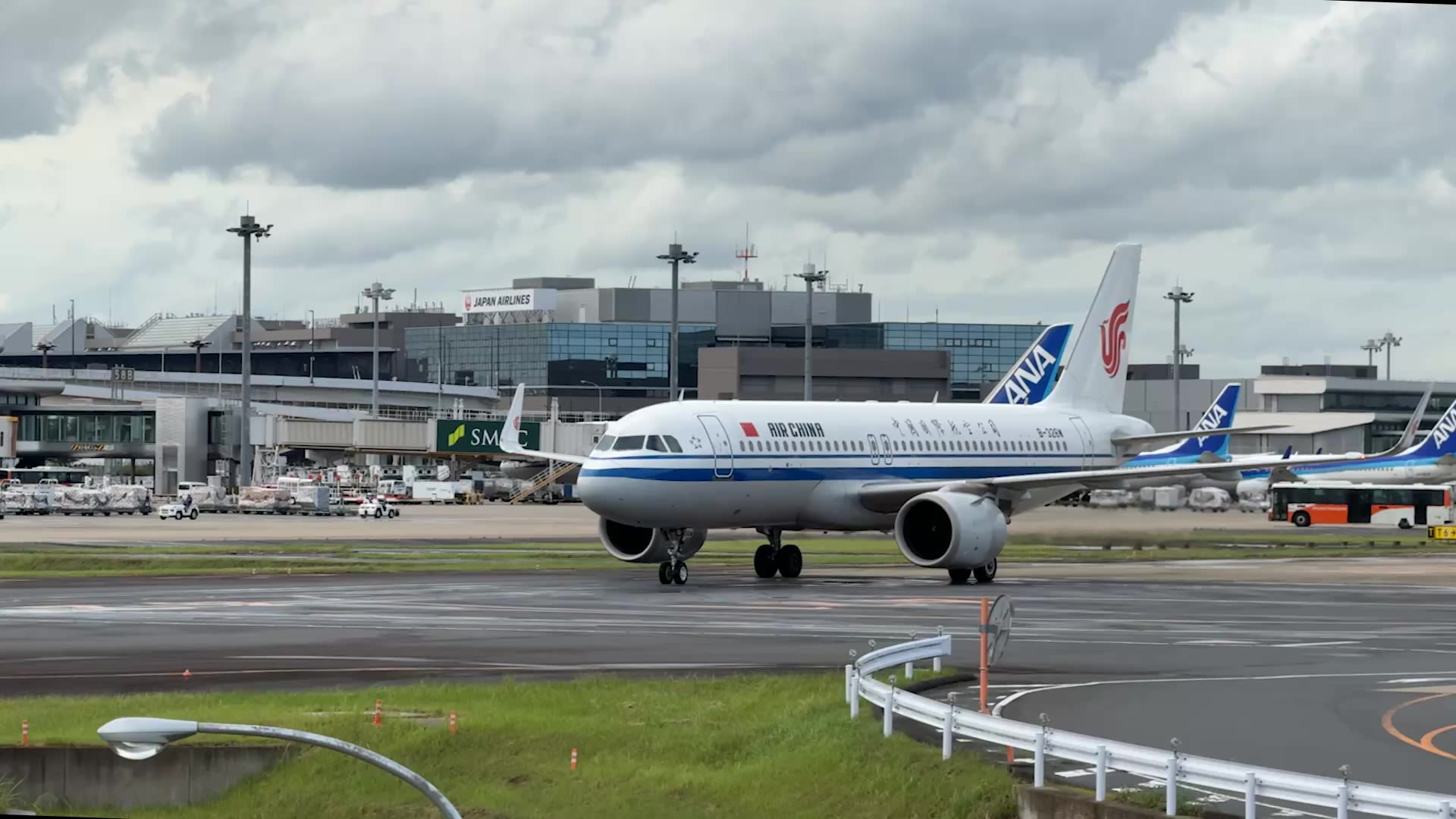
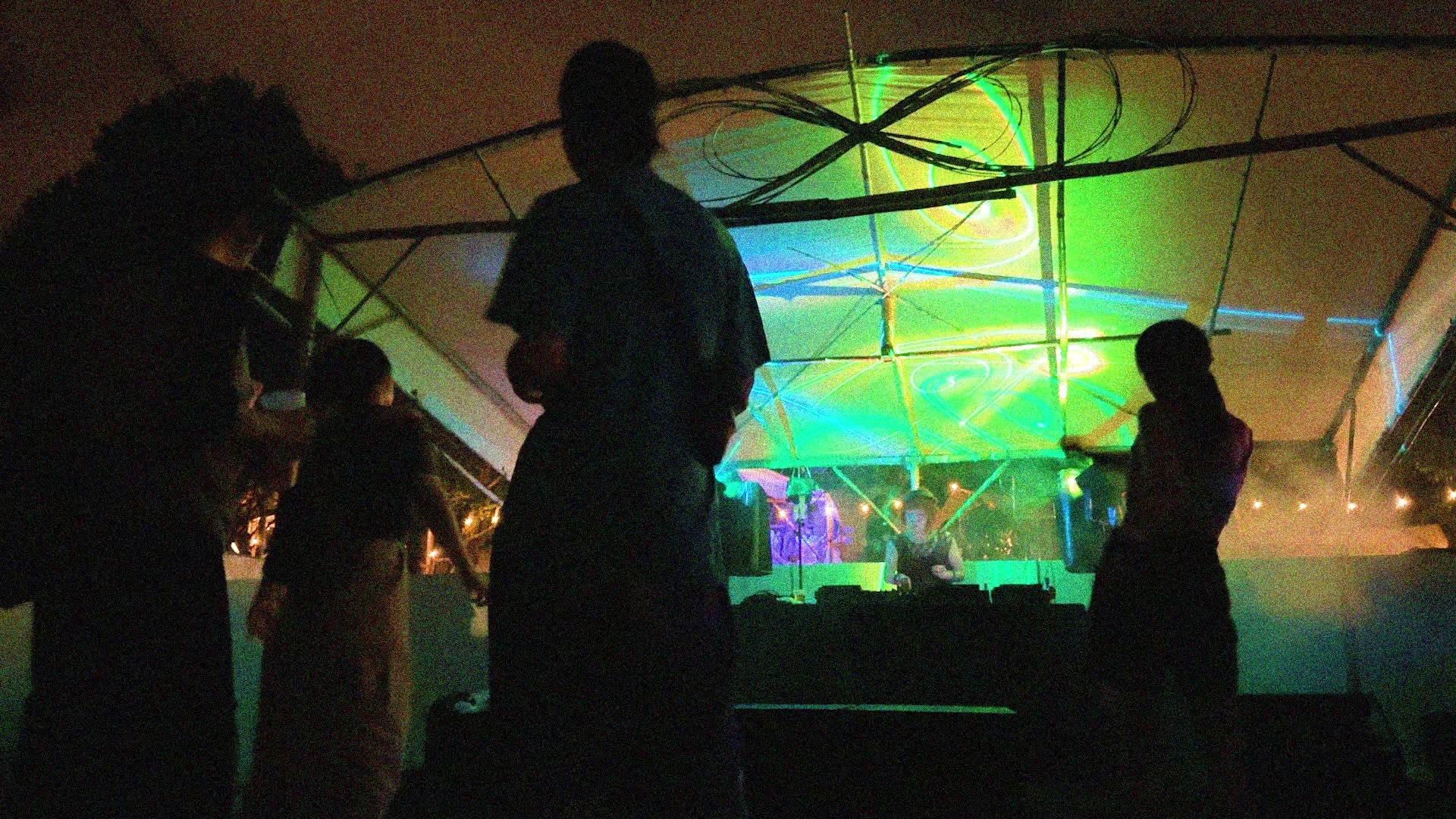

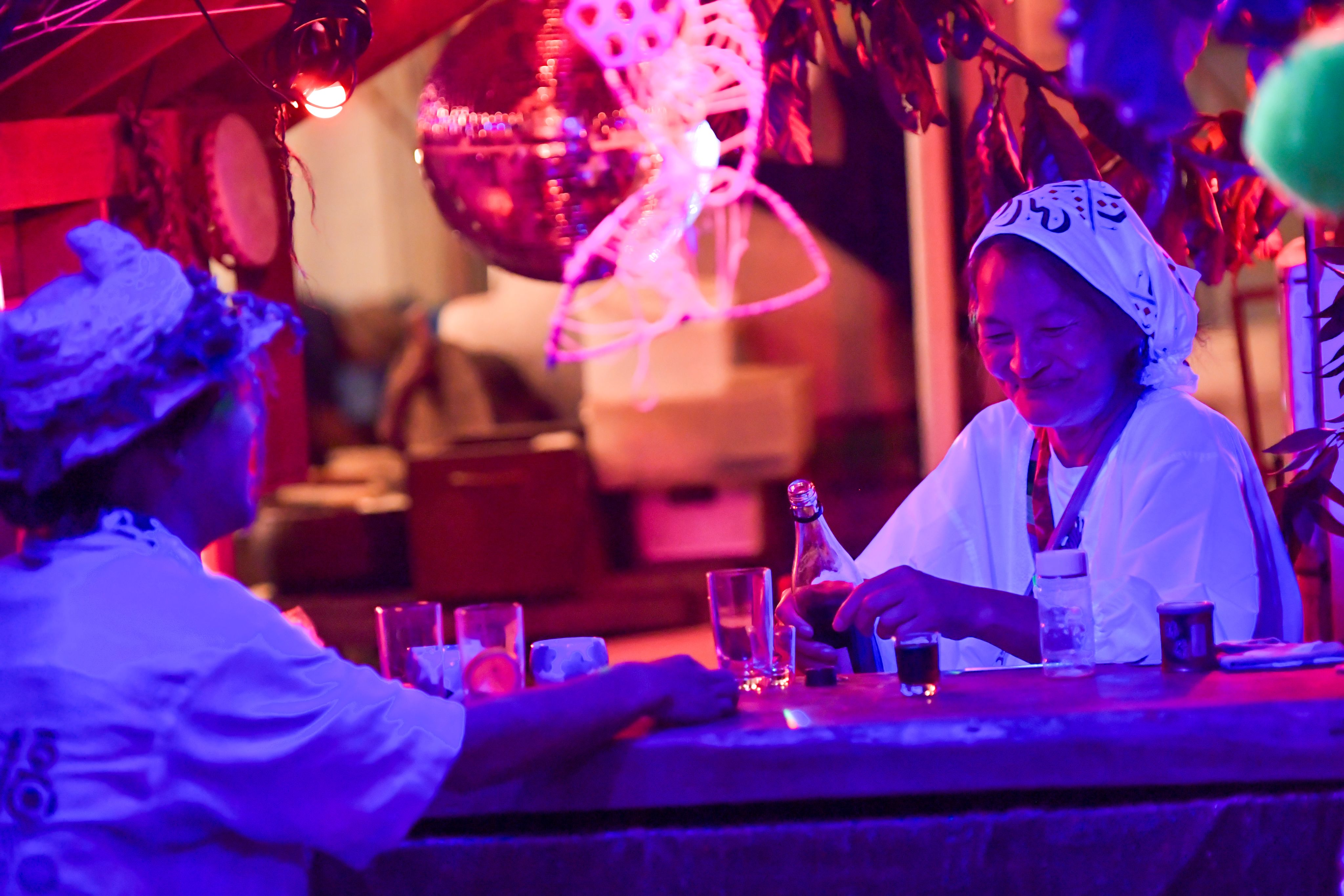
Over time, as the most intense hostilities subsided, Omori said the pension mostly became used for community meetings and study groups, especially for those researching organic farming, which is practiced around the airport.
However, Kinone Pension's raves are the only events that can drown out the jet engines.
The idea to host club events at the pension came from a visiting agricultural researcher who frequented Tokyo's nightlife. The surreal location of the house and its rebellious origins made it a perfect party location.
Word of the pension eventually reached Midori Morita, 55, co-organizer of Waifu, a Tokyo queer and feminist party collective.
Waifu was founded in 2019 after a fellow co-organizer, a transgender woman, was rejected from a women-only party in Shinjuku Ni-chome, Tokyo's LGBTQ district.
Despite the scene's welcoming image, Waifu perceived that spaces often catered to very specific groups, such as only cisgender gay men or lesbian women, and in response began hosting events focused on inclusivity and political engagement.
"I begged him," Morita said. "I told him there is real significance in holding a queer party here."
Omori, who only allowed acquaintances to host events, agreed after seeing Waifu's respect for the space.
"This is a place for those in the minority," Omori said of finding solidarity with Waifu. "We are separate from society at large and have history that is difficult for the general public to understand."
Waifu organizers held their first event at Kinone Pension in May 2021 under separate party brand, Slick, providing dance-starved clubgoers relief during the coronavirus pandemic.
The event's success paved the way for Waifu to hold its own party at the pension in September, which was similarly well-received for its organization and political awareness.
Organizers encouraged people to drink out of recyclable cups and eat local organic produce. Money generated would go to upkeep of the pension as well as to campaigns such as those in support of Palestinians in Gaza.
The event also organized tours of usually off-limits areas related to the airport struggle.
Part of the tour featured another complex completely encircled by the airport, accessible only by a tunnel and containing an old solidarity hut and a large steel tower from which protesters would observe and attack riot police.
The sites still contain items used by anti-airport activists, as well as graves that house partial remains of some protestors who wished to be buried there.
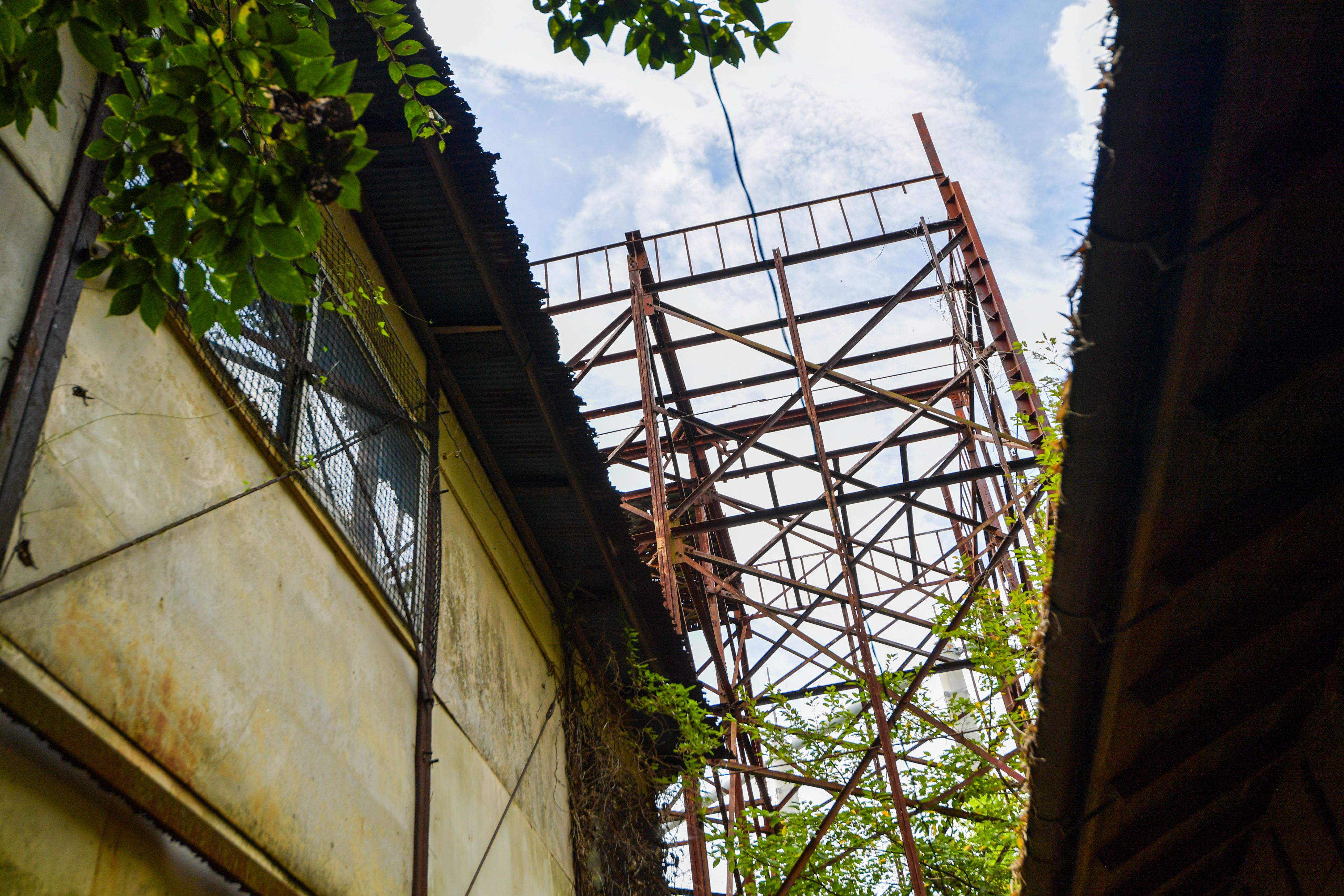
Just outside the airport grounds lies the Narita Airport and Community Historical Museum, run by the operator, which also displays objects from the protests such as flags, helmets and Molotov cocktails.
Toshiyuki Suzuki, a museum staffer, pointed out an agreement made with one of the groups that emerged from the splitting of the main protest body in 1983 over internal disputes.
The 1990 agreement with government authorities specified that no more land could be appropriated, any further airport expansion needs community approval, and a space for negotiations be created.
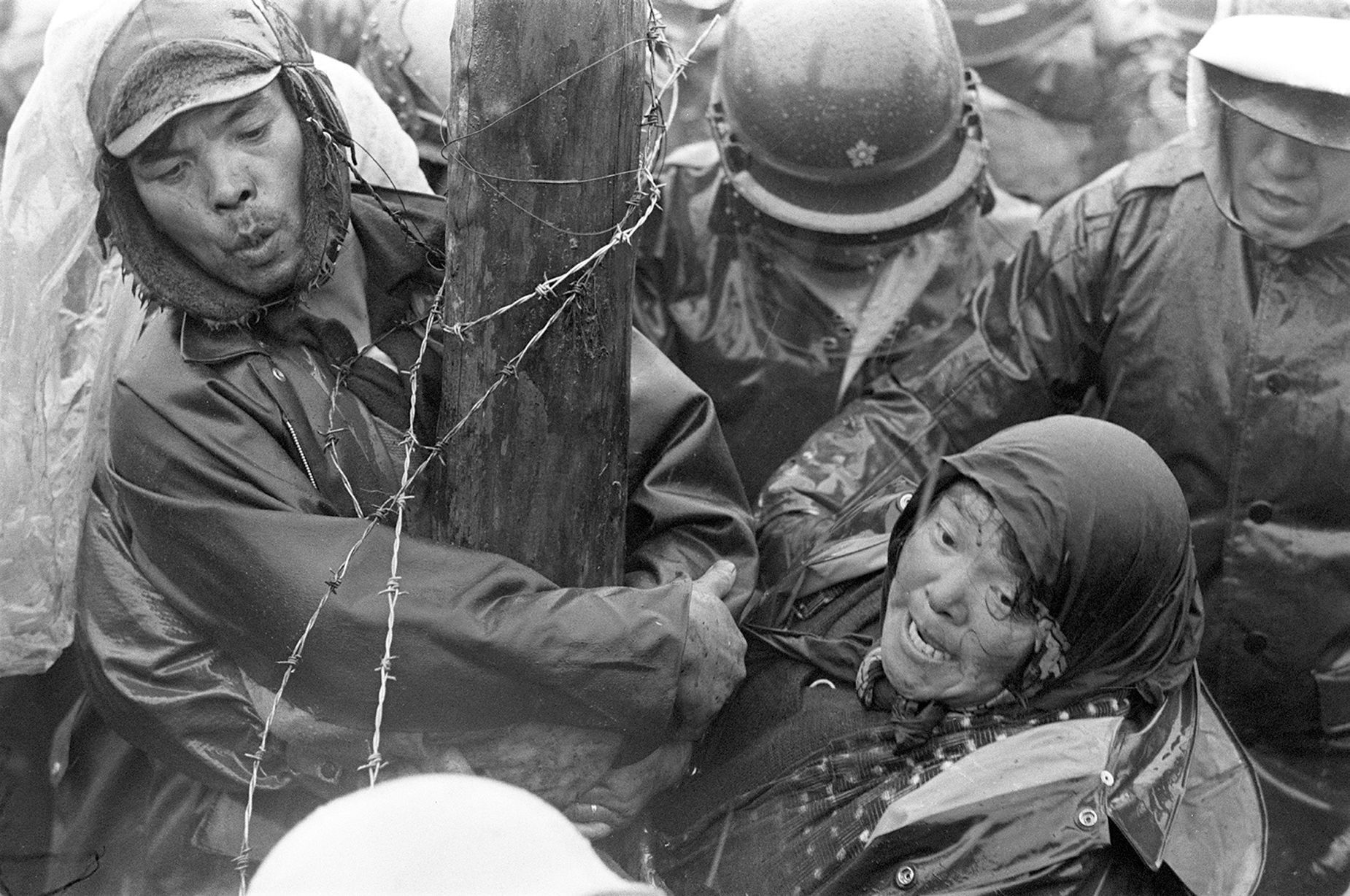
Returning from a tour conducted as the party ran into the morning, the sun was high in the sky, but the bass reverberated through Omori's car as it neared the pension's entrance.
"If we protest like before, fighting with iron pipes and such, it will become a pretext for the airport to intervene," Omori said.
"Now we do peaceful activities like music events. In that way, the airport is not threatened, and we are able to keep running."
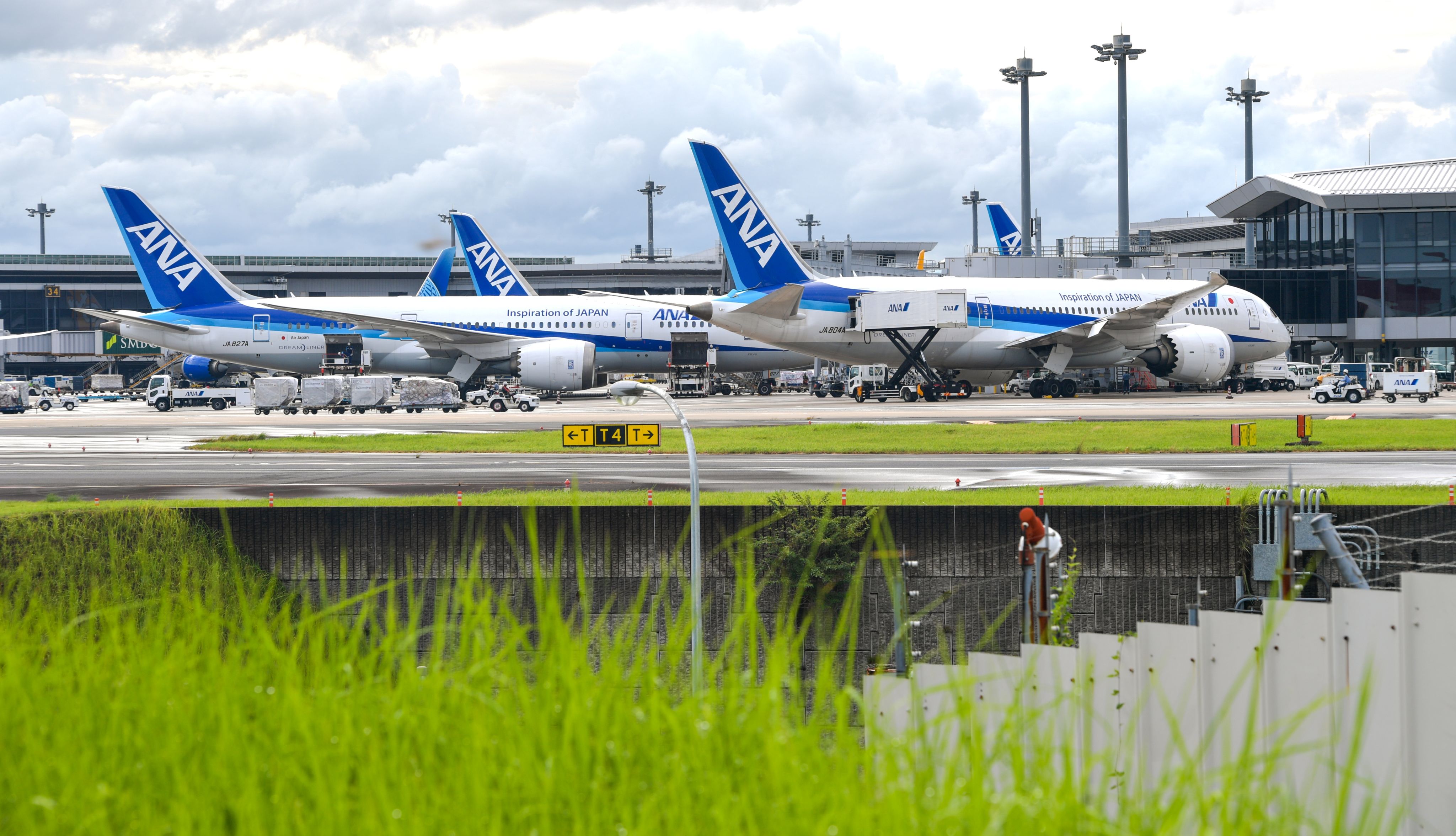
The Company uses Google Analytics, an access analysis tool provided by Google. Google Analytics uses cookies to track use of the Service. (Client ID / IP address / Viewing page URL / Referrer / Device type / Operating system / Browser type / Language /Screen resolution) Users can prevent Google Analytics, as used by the Company, from tracking their use of the Service by downloading and installing the Google Analytics opt-out add-on provided by Google, and changing the add-on settings on their browser. (https://tools.google.com/dlpage/gaoptout) For more information about how Google handles collected data: Google Analytics Terms of Service (https://policies.google.com/technologies/cookies?hl=en#types-of-cookies) Google Privacy & Terms(https://policies.google.com/privacy)
© Kyodo News. All Rights Reserved. No reproduction or republication without written permission.



